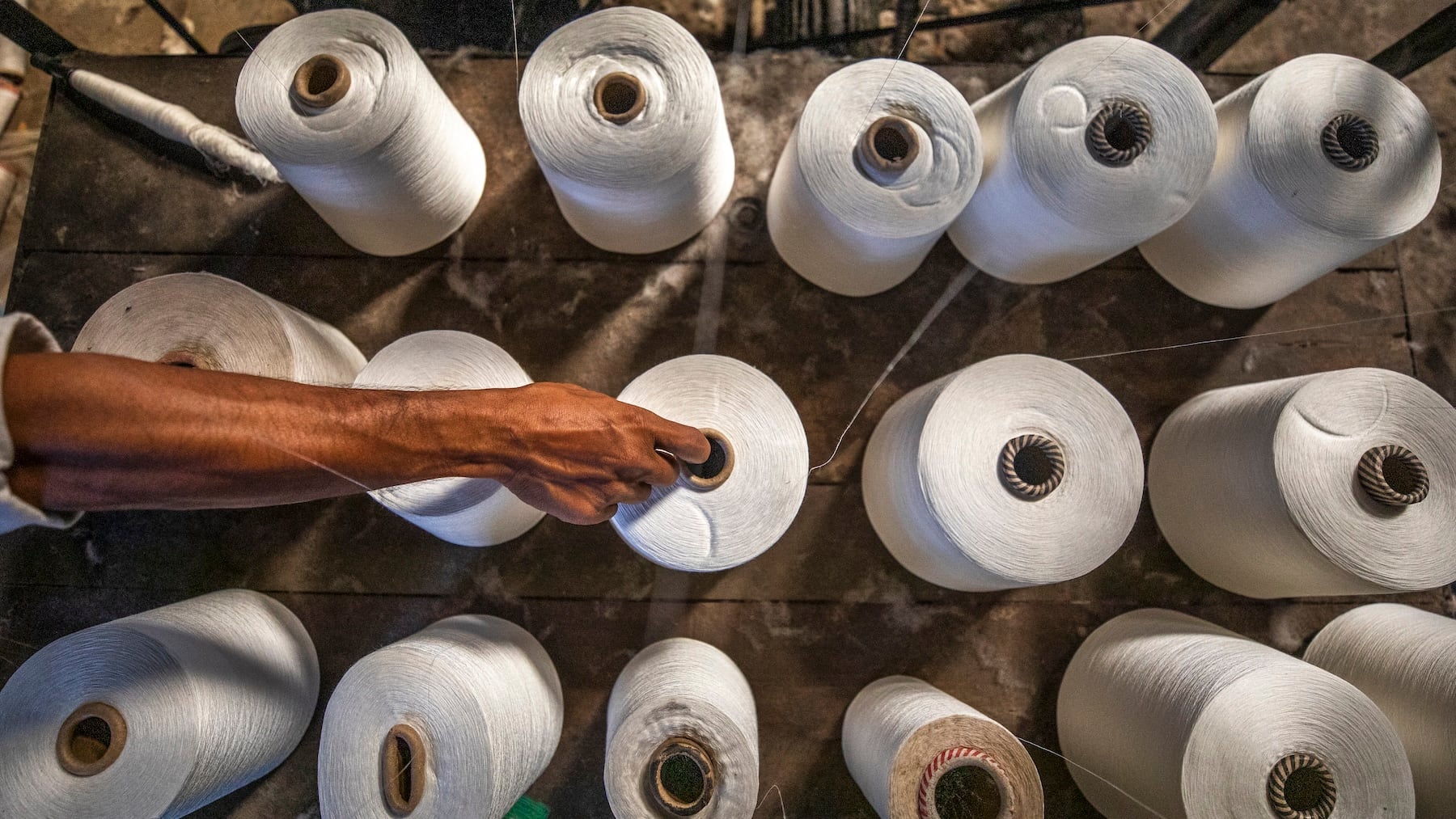
This month, temperatures from Delhi to Athens to New York hit deadly highs: the latest grim reminder that the world is galloping towards climate catastrophe. Meanwhile, fashion’s efforts to curb its environmental impact, a major contributor to global emissions, are moving at a glacial pace.
The reasons for this are myriad, but a big one is money. A flood of funding is needed to cut the industry’s planet-warming emissions in line with global goals to stave off the worst effects of global warming. But conflicting interests and structural challenges have kept investment at a trickle.
While big brands have made bold commitments to slash their carbon output, the bulk of that pollution takes place in factories the brands don’t actually own.
Meanwhile, most manufacturers aren’t exactly in a position to be making big investments with long payback times, largely because their customers (the brands) have rigged the system so that they can access production as cheaply and flexibly as possible while taking on almost no financial risk themselves.
It’s a model in which brands take most of the profits, while suppliers are subjected to relentless pricing pressure and unpredictable, trend-dependent cash flows that make for crummy credit ratings. Fragmented supply chains populated by small and medium-sized businesses already struggle with access to affordable capital, let alone the financing for long-term climate projects with dubious payback potential.
The upshot: an impasse where the biggest opportunities to drive decarbonisation have the least access to funds.
That’s why it was interesting last week when two of the industry’s most prominent sustainability initiatives and four of its biggest brands announced they had a plan to try and help solve the problem.
The Future Supplier Initiative aims to bring down the cost of financing decarbonisation by having brands help underwrite the debt their suppliers take on. It was formed with the support of climate-focused trade groups The Fashion Pact and Apparel Impact Institute and its initial roll out in Bangladesh will include participation from H&M Group, Bestseller, Gap Inc. and Mango.
“It’s the first time the brands are coming together to risk share,” said Christopher Chiam, head of consumer products for the institutional banking group at Singaporean bank DBS, which has committed to provide loans as part of the initiative. “[They] are not in the business of lending money to suppliers.”
How will it work?
The scheme’s announcement was big on ambition and short on detail — one fellow industry watcher described trying to figure out how it actually works as like “trying to crack the Da Vinci code” — but the idea is to create a collective financing mechanism that helps suppliers access low-interest loans for decarbonisation projects.
The brands’ role is to help derisk the debt, allowing banks like DBS to offer more “competitive” rates to small and medium-sized suppliers that aren’t normally considered particularly credit-worthy. This will work in two ways:
- The brands can put up the cash to fully collateralise the debt, which means if a supplier goes bankrupt the brands are on the hook to pay back the loan.
- The brands can extend a guarantee representing a proportion of the loan as a kind of insurance to offset the risk of any default.
The collective aspect is also important because it’s rare for one brand to be a supplier’s only customer. Getting a bigger group on board splits the risk and addresses the free-rider problem; brands are reluctant to go out on a limb to help finance projects that will benefit their competitors, especially when they’ll only be able to take credit for the sliver of emissions reductions that relates to the volumes they source. Working together reduces this friction and individual risks.
For instance, if all four brands are present in a factory where a $2 million project to install solar panels has been identified, each would be asked if they’d like to underwrite $500,000.
The goal is to get more brands and banks involved and to expand the programme into more countries, including Vietnam, India, China, Italy and Türkiye.
Is it going to get money moving?
The hope is that this financial innovation will help unlock much more climate action. But there are big challenges and a lot of unanswered questions.
The initiative’s aim is to give smaller players (who might otherwise face astronomical interest rates or not even get access to debt in the first place) loans at significant discounts.
But exactly what rates suppliers will be offered — a critical issue — is fuzzy, set to vary from project to project. Likewise the manufacturers that stand to benefit from the scheme are yet to be determined. Consultancy Guidehouse has been contracted to identify the top 10 suppliers with big-ticket decarbonisation opportunities and links to participating brands’ supply chains in Bangladesh. Whether those will also be manufacturers who struggle to gain access to finance on their own remains to be seen.
Even how much money the brands are going to stump up is an open question. Typical loans will be in the range of $1 million to $2 million per brand, but they won’t be capped at that level.“It’s going to be up to brands’ own budgets how much money they want to risk or de-risk,” said Leyla Ertur, H&M’s head of sustainability. “There is no minimum or maximum limit, but everyone knows, it will not be $50,000.”
There’s also the question of what’s missing: any kind of mechanism to help smooth out the business volatility that makes taking on debt so risky for many suppliers who also question why they should be left to bear the costs of a problem the most profitable players in the industry have effectively outsourced.
Clear sourcing commitments that offer longer-term business certainty would likely be more effective at juicing investment in decarbonisation than access to cheaper finance, acknowledged Guidehouse’s manager of environmental stewardship Betsy Blaisdell. But the loans still give brands financial exposure to a factory’s fortunes they never had before.
“The whole apparel supply chain has been set up to… [allow brands] to lean out as much as possible from a risk standpoint, and this programme says you have to lean right back in,” said Blaisdell. “[The brands will have] skin in the game in the factory for a chunk of time and it will be crucial for them to meet their climate goals, so to walk away is a real hard walk away.”
Editor’s Note: This article was revised on June 21, 2024 to provide additional clarity around the value of loans the Future Supplier Initiative will provide.



